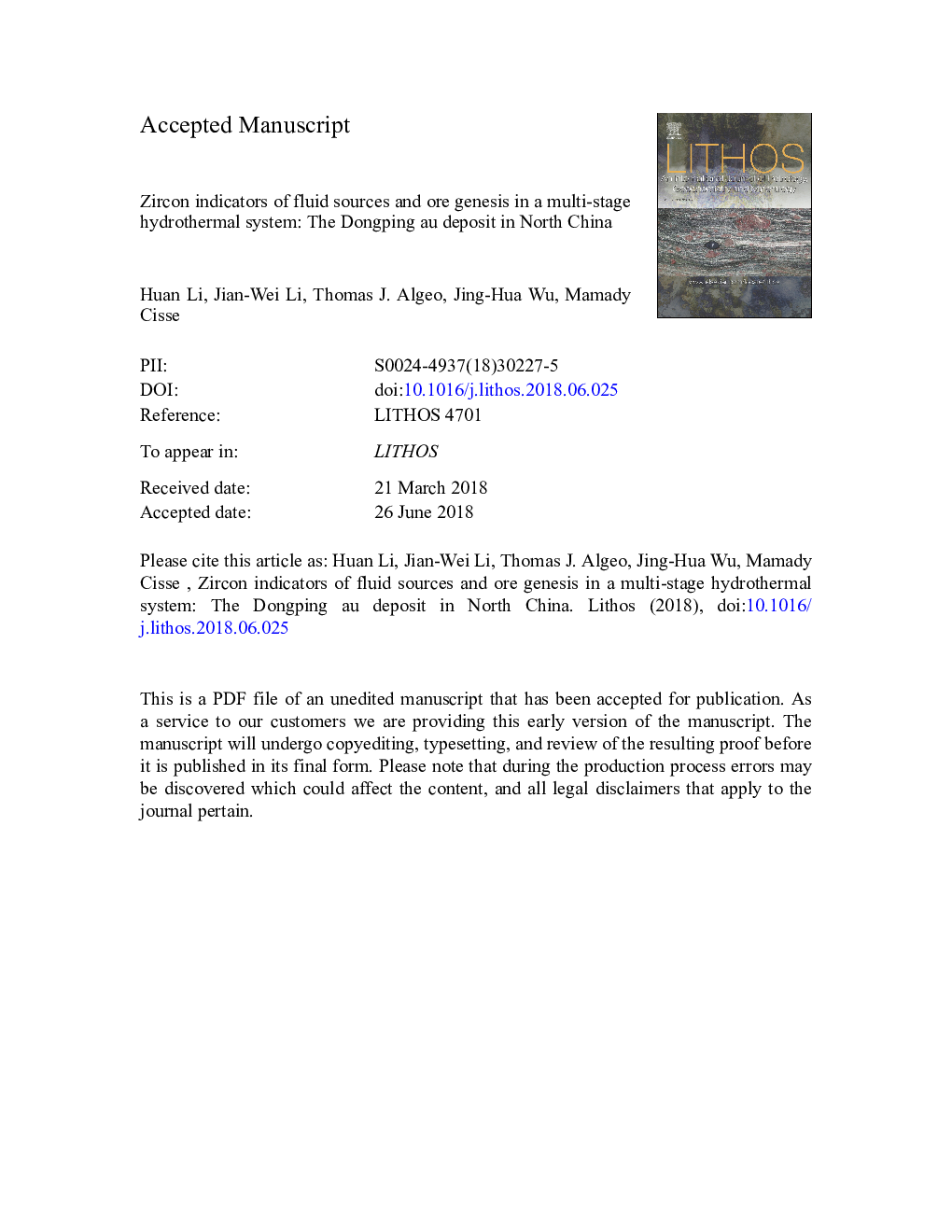| Article ID | Journal | Published Year | Pages | File Type |
|---|---|---|---|---|
| 8911560 | Lithos | 2018 | 55 Pages |
Abstract
The syenite-hosted Dongping gold deposit represents the largest gold deposit on the northern margin of the North China Craton. Here, we present new UPb age, trace-element concentration, and Hf-isotope data from magmatic and hydrothermal zircons to better constrain the timing and genesis of gold mineralization. Geochronological data, combined with field and petrologic results, document two mineralization events. The earlier event, in the mid-Devonian (~380â¯Ma), was associated with the intrusion of the Shuiquangou syenite, whereas the later event, in the early Cretaceous (~140â¯Ma), was related to the emplacement of the Shangshuiquan granite. Devonian hydrothermal zircons extracted from gray auriferous quartz veins were formed via metasomatic alteration of magmatic zircons derived from the syenite, by an oxidizing F-rich fluid. In contrast, Cretaceous hydrothermal zircons hosted in the altered Shangshuiquan granite and milky gold-rich quartz ores were precipitated directly from a high-temperature Zr-saturated aqueous fluid that was contaminated by basement materials, possessing a substantially different Hf-isotopic composition from the contemporaneous magmatic zircons. We propose that the Devonian Au mineralization event at Dongping involved a magmatic fluid and auto-metasomatism during crystallization of the Shuiquangou syenite complex, whereas the Cretaceous Au mineralization event involved a fluid exsolved from the Shangshuiquan alkaline pluton. Results from this study highlight the potential utility of zircons as indicators of fluid sources and ore genesis in a multi-stage hydrothermal system.
Related Topics
Physical Sciences and Engineering
Earth and Planetary Sciences
Geochemistry and Petrology
Authors
Huan Li, Jian-Wei Li, Thomas J. Algeo, Jing-Hua Wu, Mamady Cisse,
